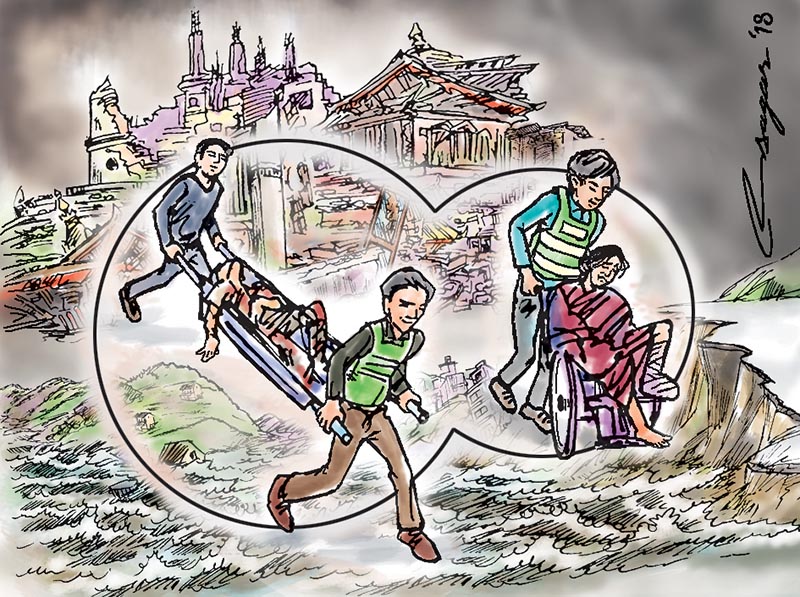Govt envisages resilient communities
The strategy aims to define local levels’ role in disaster mitigation and response
Kathmandu, December 1
The government has formulated a model ‘Strategy for Resilient Local Communities, 2018’ to enhance the participation of local communities in disaster management and climate change adaptation activities.
According to the strategy made public by the Ministry of Federal Affairs and General Administration, it is expected to mainstream climate change adaptation and disaster management into development activities at the local level. The constitution has also made the local levels responsible for disaster risk reduction and disaster management, stating that it was a shared responsibility of all three tiers of governments.
The strategy aims to define the roles and working areas of the local levels and communities in identification of disaster and vulnerability, disaster risk reduction, and disaster preparedness and response, while developing their capacity for the promotion of resilience. The expected outcome of the strategy includes expansion of local, provincial and federal governments; preparation of local emergency management action plan; reduction in physical, economic and social loss likely to be cause by disasters (both natural and non-natural); timely mobilisation of volunteers and security agencies for search, rescue and relief operation during disaster; implementation of the concept of ‘Build Back Better’; and smooth supply of essential goods and services in emergency situation, among others.
The strategy envisages the principles of making the local levels and communities capable of coping with the challenges of all kinds of disasters to gradually develop their resilience. It has proposed a provision of positive discrimination in the case of socially and economically backward people, Dalits, women, children, senior citizens, persons with disabilities, squatters, nursing mothers and endangered castes to attach higher priority to resilience.
As per the strategy, the concerned local levels will prepare and implement resilience development action plan in three phase. It requires the local levels to identify vulnerable areas, households and persons; relocate the vulnerable families to safer place; ensure storage of necessary logistics, medicines, food and search and rescue equipment; and insurance
of crops and livestock in the first phase.
The second phase involves capacity development in post-disaster activities, including damage assessment, data collection and need assessment of emergency goods and services; search, rescue and relief operation; disaster response; distribution of goods, services and cash to the affected persons or families; repair/maintenance of road, telephone line and other public amenities; and identification of livelihood measures.
In the third phase, the local levels and communities will develop their capacity to identify and implement the vulnerability mitigation measures.






